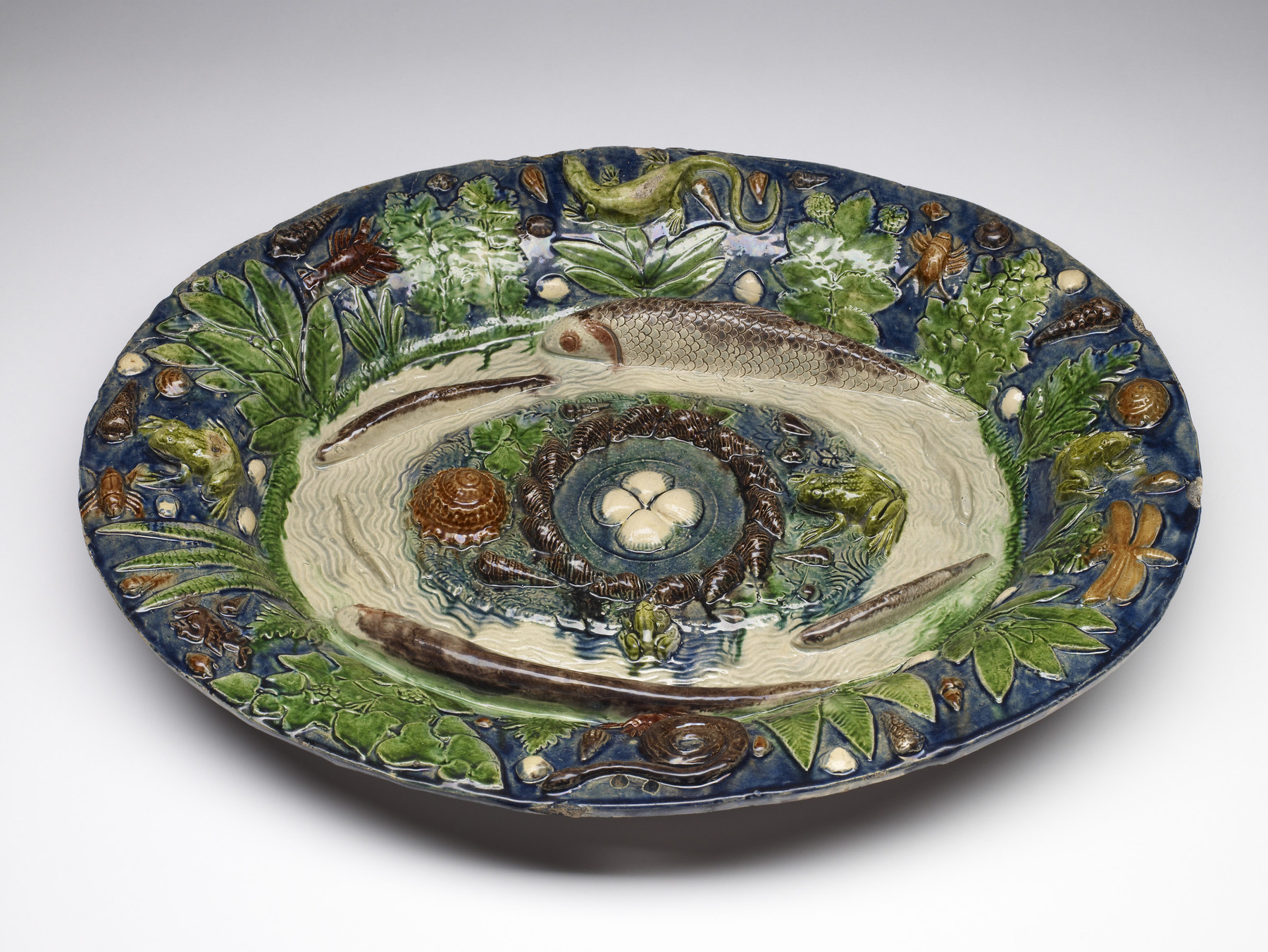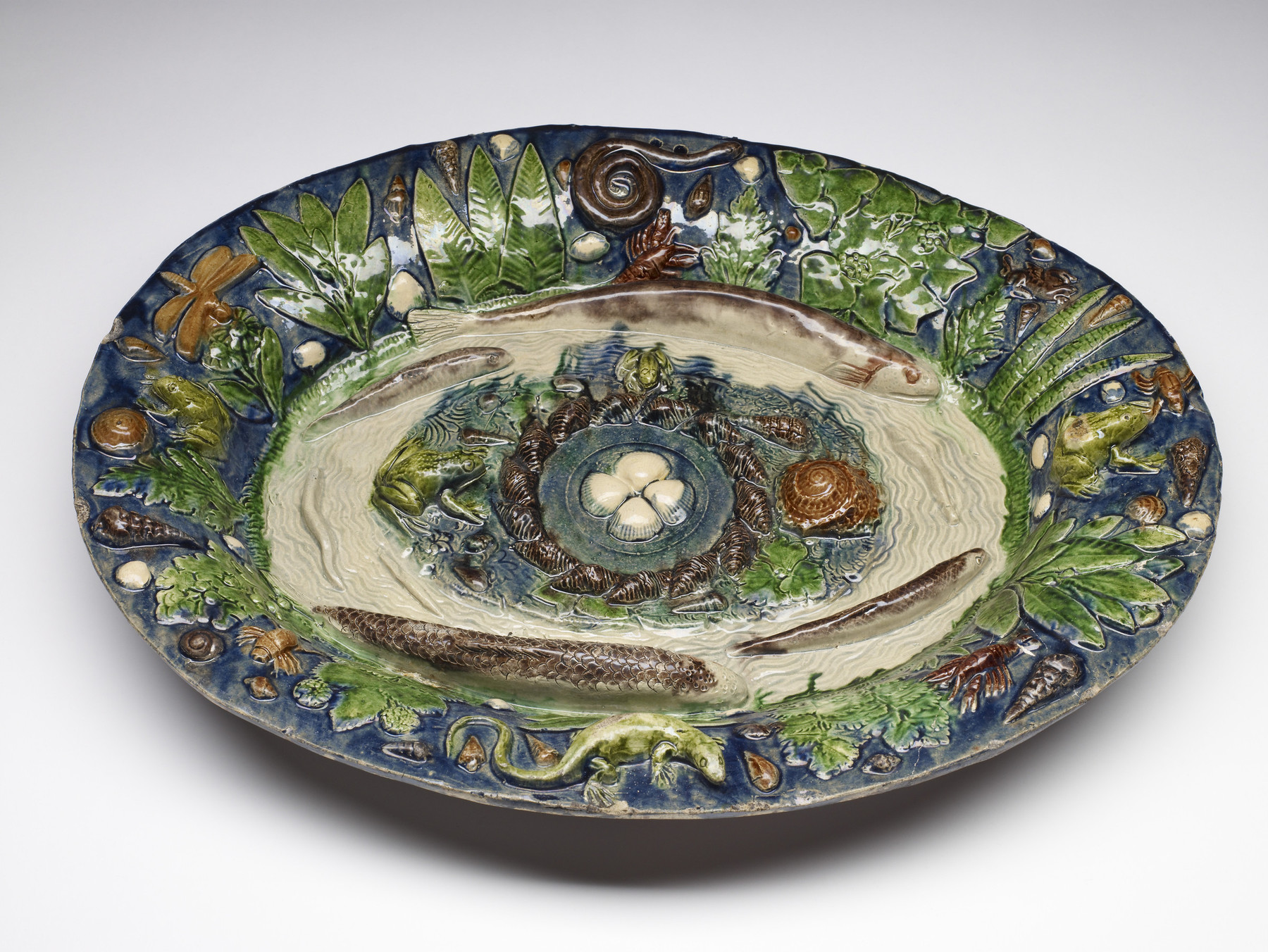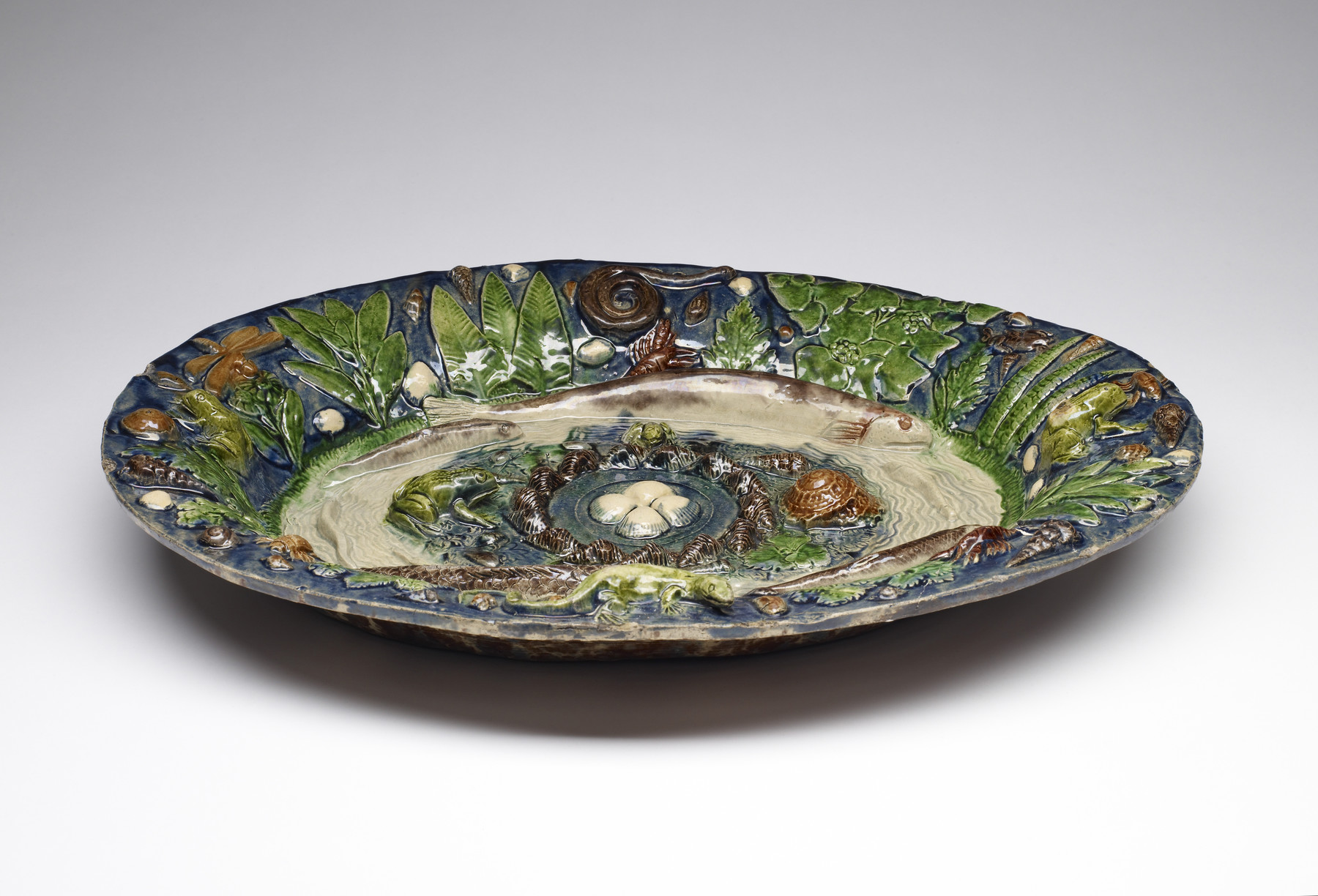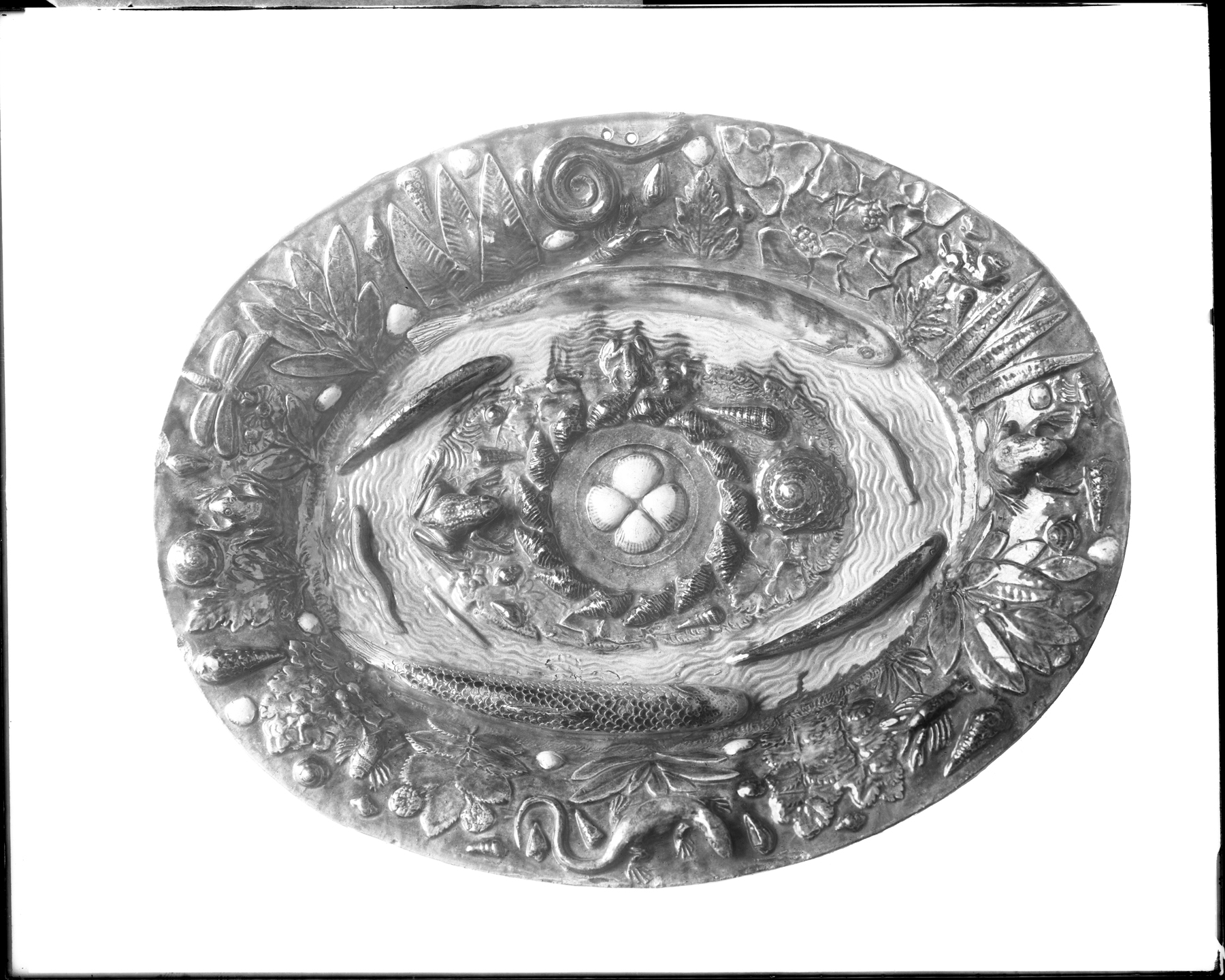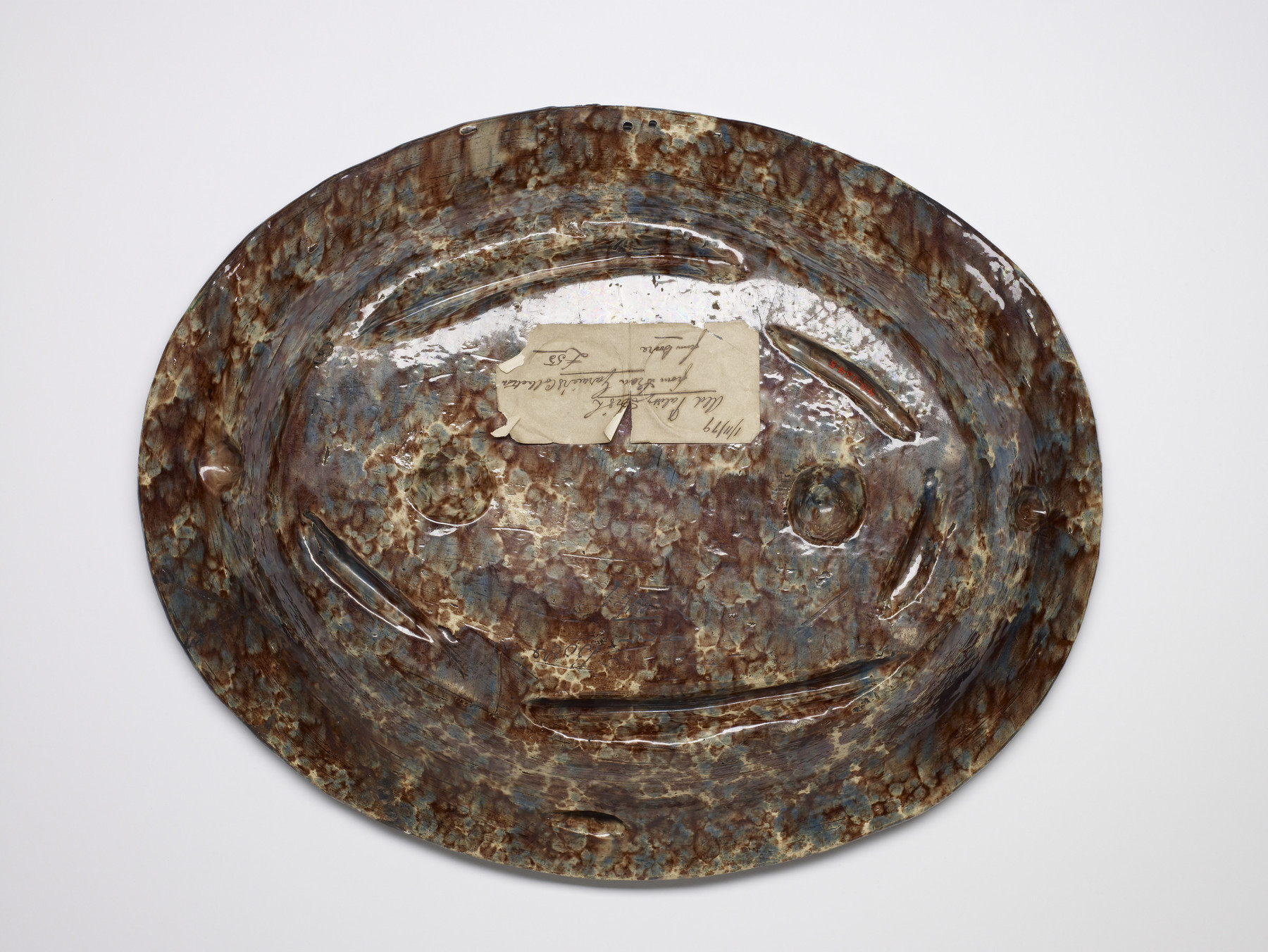Ornamental Platter with Pond Life
(Renaissance Europe )
Palissy is known as a potter for such oval dishes transformed into tiny ponds, complete with vegetation, fish, and creatures from the water's edge. To make his ceramic ponds as lifelike as possible, he made molds from actual shells, frogs, lizards, fish, and other creatures to create life-like models. He developed new techniques for more subtle tones and life-like coloring. The ingenuity of these imitations of nature was greatly appreciated in court circles; one of his patrons was the French queen, Catherine de Medici. The popularity of his works extended long after his death, as seen in the work of 17th-century imitators, such as the unidentified ceramicist responsible for the present piece.
In Palissy's desire to find better clays for pottery and invent more vibrant glazes, he began digging in the earth, which led him to the study of nature's "secrets" concerning minerals, the flow of water, and fossils, about which he made important discoveries.
Palissy had many imitators after his death. The creatures on this platter do not have have the crispness of Palissy's indubitably original work and is likely by an imitator from the 1600s.
Provenance
Provenance (from the French provenir, 'to come from/forth') is the chronology of the ownership, custody, or location of a historical object. Learn more about provenance at the Walters.
Dean Garnier [label on back]; William Boare [date and mode of acquisition unknown]; Sale November 1, 1879; Jacques Seligmann, Paris [date of acquisition unknown], by purchase; Henry Walters, Baltimore, 1911, by purchase; Walters Art Museum, 1931, by bequest.
Exhibitions
| 2021-2022 | Majolica Mania. The Bard Graduate Center, New York; The Walters Art Museum, Baltimore. |
| 1971-1972 | World of Wonder. The Walters Art Gallery, Baltimore. |
Geographies
France, Paris (Place of Origin)
Measurements
H: 2 3/4 × W: 20 × D: 15 3/4 in. (6.99 × 50.8 × 40.01 cm)
Credit Line
Acquired by Henry Walters, 1911
Location in Museum
Accession Number
In libraries, galleries, museums, and archives, an accession number is a unique identifier assigned to each object in the collection.
In libraries, galleries, museums, and archives, an accession number is a unique identifier assigned to each object in the collection.
48.1345

